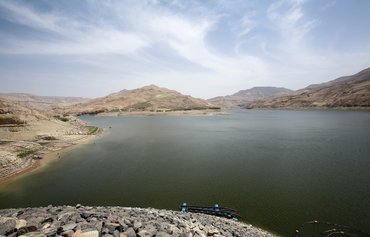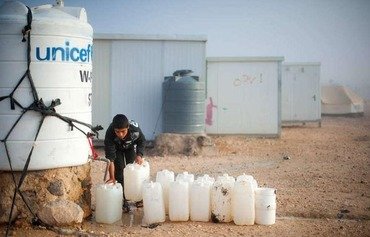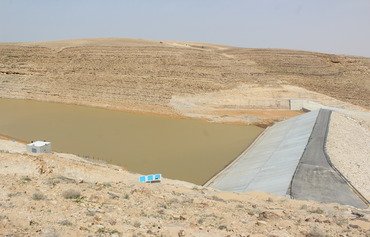Jordan has been struggling to meet the rising demand for water during Ramadan and the hot summer months, particularly in the northern governorates, which are hosting the majority of Syrian refugees.
Among those afflicted by the water shortages is Mirza Oweimer, a Syrian refugee who settled outside the northern town of al-Ramtha seven years ago with his family of five.
Despite the continuous efforts of the Jordanian government to boost water supply to the northern governorates, the situation has not improved, he said.
"Things get especially worse in summer and now, during the holy month of Ramadan," he said.
Oweimer said he buys a water tank every 10 to 12 days that costs him around 11 Jordanian dinars ($15.49). He also goes into al-Ramtha every few days to fetch drinking water.
Increasing demand for water
"Jordan is considered the third poorest country in the world in terms of water resources," said Water and Irrigation Ministry spokesman Omar Salameh.
It has the lowest per-capita water consumption in the world, he added.
"The limited amounts of water Jordan possesses could suffice up to three million people," water expert Elias Salameh told Al-Mashareq.
But Jordan’s population now "exceeds 6.7 million, in addition to refugees from Syria, Iraq and elsewhere, and guest workers", he said.
The northern governorates, which host most of the Syrian refugee population, are most affected by the water shortages, the water expert said.
"Among the challenges Jordan faces is catering for the 1.4 million Syrian refugees," Omar Salameh said. "The demand in northern regions has increased by more than 40%."
"Lack of funding to implement water-related projects, the decrease in international aid to face the crisis of the Syrian refugees in Jordan, and the high cost of energy have exacerbated the problem," he said.
The refugees' needs are stretching Jordan’s already limited resources, and now Jordan is able to provide only 150 cubic metres of water per person annually, much lower than the 500 cubic metres that marks water scarcity by UN estimates.
Severe shortage of water
In the northern governorate of Mafraq, home to the massive Zaatari refugee camp, local resident Mohammad Awad told Al-Mashareq there has been no water for the past two weeks.
"Before the Syrian crisis, we used to get water twice a week, now we just get it once a week," he said, and only every two weeks during the summer months.
The main reason for the water shortages in the northern areas is that the Syrian refugee population is concentrated in northern Jordan and shares limited water resources with the indigenous population.
The Ministry of Water is working to boost water supply to Jordan’s northern governorates, Omar Salameh said.
It has developed plans to address these challenges through new networks that aim to reduce the waste "and to achieve transparency and justice in water distribution".
"Developing methods of agriculture also will help in rationalising the allocated amount of water," he added.
Stopping illegal water usage
"Allocating more water for the northern governorates is a wise policy, but controlling and stopping the illegal use of drinking water for irrigation is a big task" for the ministry, said water expert Salameh.
"Water leakages should be stopped because this is a more financially effective way of increasing the availability of drinking water," he said.
Over the past three years, the illegal use of drinking water has reached more than 5000 cubic metres per day at some farms, he said -- enough to meet the household needs of some 60,000 Jordanians -- a small city.
In the long term, new projects being implemented include "doubling the capacity of the desalination station in Aqaba to 10 million cubic metres and proceeding with phase two of the Disi Water Conveyance in Wadi Araba", Omar Salameh said.
The project will provide 30 million cubic metres designated to supply the northern governorates by the beginning of 2019, he said.
Other projects include expanding the use of treated water for "controlled agriculture" by doubling it to 240 million cubic metres by 2025 and increasing the capacity of some dams to reach 400 million cubic metres by 2020, he said.

![Men fill a water container at Jordan's Zaatari refugee camp, which is home to some 80,000 Syrian refugees, on November 13th. [Khalil Mazraawi/AFP]](/cnmi_am/images/2018/06/12/13046-Jordan-water-tanker-600_384.jpg)






